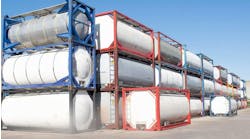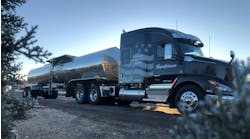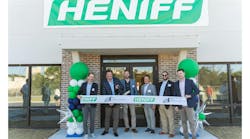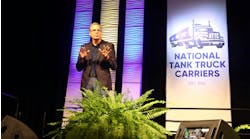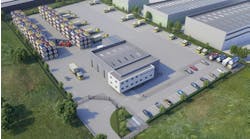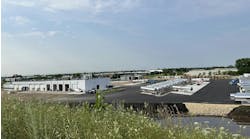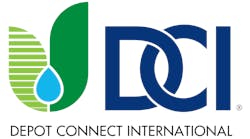Since opening last year, the Kraft Wash tank cleaning facility has steadily expanded its customer base. Demand has grown to the point that the wash rack recently announced that it has extended its hours of operation.
A division of Kraft Tank, the Kraft Wash opened for business in May 2019. The five-bay wash rack shares space with Kraft Tank’s DOT-code tank repair facility at 320 Kindleberger Rd in Kansas City, Kansas. The wash rack handles both chemical and foodgrade cleaning and is kosher- and National Sugar-certified.
Extended hours now keep the wash rack open 16 hours a day during the work week and 8 am to noon on Saturdays. The facility now employs two cleaning shifts.
“We initially developed this wash rack to support our tank maintenance and repair operations,” says Alex Guhr, Kraft Tank vice-president. “We saw it as both a convenience and a necessity. It gives us more control over the full process of managing the maintenance and repair activity.
“At the same time, we were very pleased to see that there was a demand for more tank cleaning capacity in the Kansas City area. We also see more potential now to add tank cleaning operations in other areas where we offer cargo tank maintenance and repair.
“We will open a free-standing chemical wash rack in Oklahoma City, Oklahoma, later this year. Construction should be finished around June.”
Rack design
With years of experience in the tank cleaning industry, Guhr played a critical role in the design of the Kraft Wash facility in Kansas City. The wash rack was laid out for safe, efficient operation.
Wash bays are 25 feet wide, which provides a clear walk area around tanks being cleaned. Skylights and LED lighting ensure a well-lit work area.
A range of chemicals—including materials used in consumer cleaning products, latex, agricultural chemicals, and refined petroleum—are cleaned at the two-bay chemical rack. Next to the chemical bays is a bay dedicated to exterior washes of tractors and trailers. The two-bay foodgrade side typically handles starch, flour, sugar, beverage alcohol, plastics, and some edible oil.
The wash rack currently cleans about 20 tanks a day. “We could almost double that if we were running at full capacity,” Guhr says. “We have plenty of additional capacity. We also do 20 to 30 exterior washes of tractors and trailers every day.”
Vat system
Derby City Pump & Valve Service Inc in Louisville, Kentucky, built the vat style wash systems used in the chemical and foodgrade bays. On the chemical side, 1,000-gallon vats contain hot water, caustic, and detergent. Pre-solve also is available for products such as latex. Foodgrade cleaning vats have an 800-gallon capacity and contain rinse water and hot water.
Foodgrade detergent and caustic are injected into the hot water stream flowing to the spinners during the cleaning process. All cleaning solutions are supplied by A-One Chemicals & Equipment.
“We regularly change out the rinse water in the foodgrade cleaning vats—sometimes more than once a day,” Guhr says. “Workers also clean the foodgrade bays at the beginning and end of each shift. It’s all part of a strict program to maintain the highest sanitary conditions in the foodgrade bays.”
Baldor pumps send cleaning solutions and hot water to Gamajet/Alfa Laval spinners. Two 100-horsepower boilers generate steam and hot water for tank cleaning. Kraft Wash also has an outside steam rack for degassing petroleum trailers prior to maintenance and for steam cleaning. Multiple steam line connections at each rack position simplify the process of steaming multiple-compartment trailers.
Blowers in the wash rack help dry tank trailers after cleaning. Outside the wash rack, Kraft Wash also has a high-capacity system with a Gardner Denver blower for drying dry bulk trailers and storage silos. The blower system was assembled in-house at Kraft Tank, which provides similar blower packages for silo storage tanks.
Wastewater from the tank cleaning operation is pumped to Kraft Wash’s pretreatment system, where pH is adjusted, and solids are collected and flocked. The treated wastewater is released into the city sewer and the non-hazardous flocked solids are sent to an approved landfill. Chemical heels are drained from tank trailers prior to cleaning and are sent to an approved facility for disposal.

